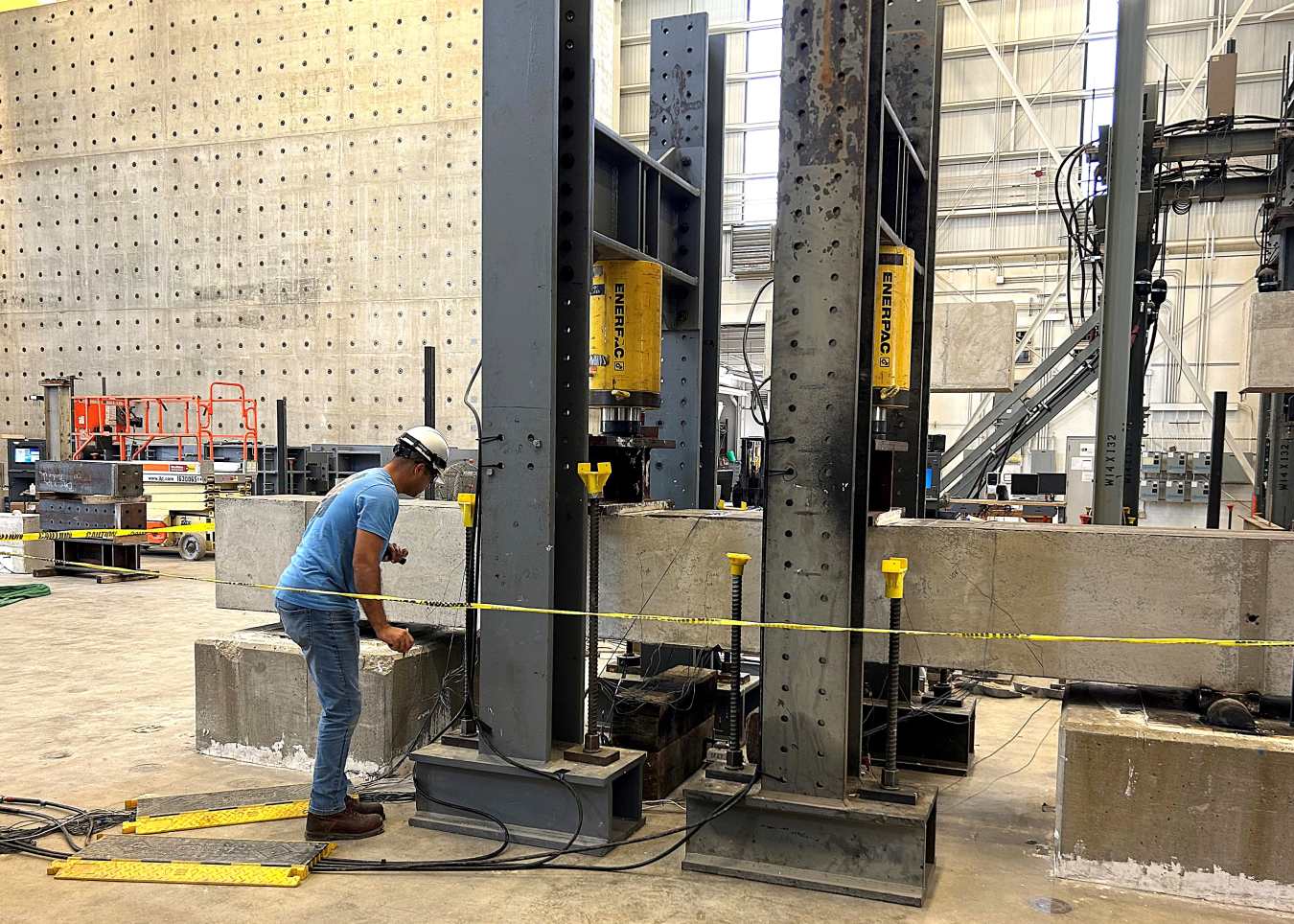Insider Brief
- GE Hitachi Nuclear and U.S. Department of Energy-backed researchers successfully tested a modular steel-concrete wall system, the Diaphragm Plate Steel Composite (DPSC), which could reduce the cost and time needed to build nuclear reactor containment structures.
- The small-scale test at Purdue University demonstrated the DPSC system’s resilience under stress, clearing the way for future demonstration projects and potential deployment in advanced reactor projects, including GE Hitachi’s BWXR-300 small modular reactors planned for Ontario, Canada.
- Prefabricated and filled on-site, the DPSC panels offer flexible assembly, improved inspection efficiency, and corrosion resistance, aligning with DOE goals to lower nuclear construction costs by up to 10% and accelerate deployment of next-generation clean energy systems.
A Breakthrough in Nuclear Construction Methods
A new construction technique could lower the cost and speed up nuclear reactor builds in the U.S.
A GE Hitachi Nuclear-backed team successfully tested a modular steel-concrete composite wall system that could significantly reduce the time and expense of building containment structures for nuclear power plants, according to the U.S. Department of Energy. The method, called Diaphragm Plate Steel Composite (DPSC), uses prefabricated steel plates filled with concrete and is designed to simplify and speed up on-site assembly.
Proven Strength in Stress Tests
The small-scale demonstration, conducted at Purdue University’s Bowen Laboratory, simulated real-world stresses such as earthquakes. According to the statement released by DOE, Idaho National Laboratory program manager Luke Voss indicated the DPSC system “exceeded our expectations.”

“We are very excited and enthusiastic about the use of this construction technology to help save time and money in the deployment of new nuclear reactors,” Voss said.
The research is part of a broader initiative by the DOE to lower nuclear construction costs by up to 10%. Alongside other advanced construction technologies, the DPSC approach aims to address one of the biggest obstacles to building new reactors: high upfront costs and lengthy timelines.
Unlike traditional methods, which often require months of on-site labor-intensive work, the DPSC system relies on modular construction. Steel panels are built off-site with internal connectors and circular holes for concrete to flow through. These panels can be transported to the reactor site and assembled while groundwork is still underway. Once installed, the hollow steel walls are filled with concrete to form the final structure.
Advantages of Modular Design for Nuclear Reactors
“The successful design, fabrication and testing of DPSC modules demonstrates the potential of this advanced fabrication and construction technology to lead to cost savings and improved project schedules in the deployment of small modular reactors,” said Sean Sexstone, Executive Vice President, Advanced Nuclear, GE Hitachi.
The design offers flexibility beyond construction speed, the DOE pointed out. The panels can be tailored with different materials on either side of the wall to address corrosion concerns, especially important in nuclear environments. Modules can also be welded together horizontally or stacked vertically to suit varying project needs, and the uniform design enables more efficient inspections.
What’s Next: Licensing and Deployment in Ontario
This type of modular construction is already familiar to the broader building industry but has yet to gain a strong foothold in nuclear projects, where rigorous safety standards and complex engineering requirements often demand custom solutions.
Data collected from the Purdue tests will be submitted to support the licensing of the DPSC system for full-scale use in containment buildings. GE Hitachi has proposed a demonstration project to build a portion of a reactor containment wall using the DPSC approach. If approved, the demonstration will also use digital twin and nondestructive testing technologies to track the structure’s integrity in real-time.
GE Hitachi plans to implement the DPSC method in its upcoming BWXR-300 small modular reactors, the first four of which are scheduled for construction in Ontario, Canada. These smaller reactors are part of a new wave of nuclear development aimed at delivering cleaner energy more efficiently and at lower cost.








